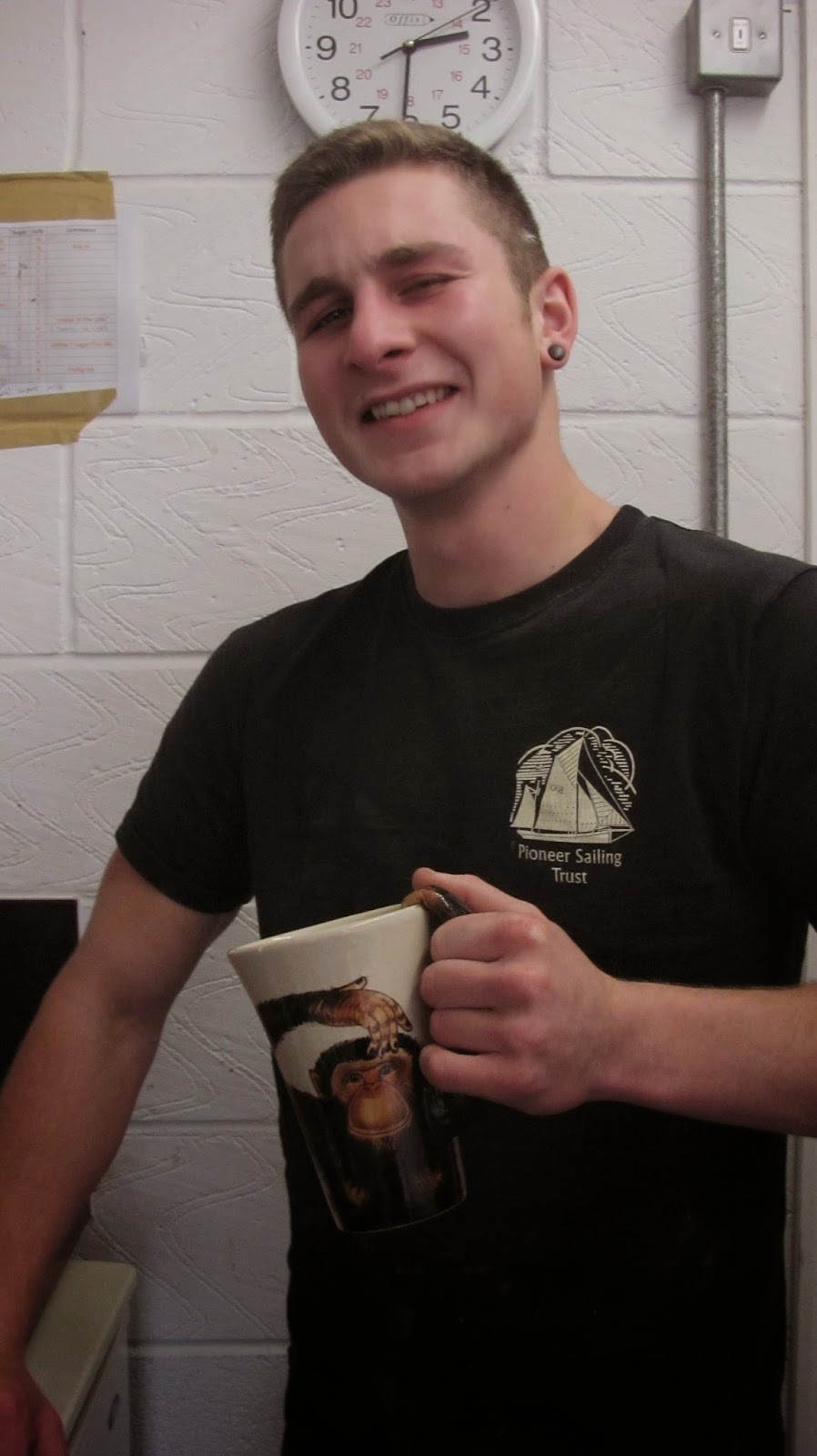Anyone for coffee?
It’s 10am, morning break for the apprentices. “Why does this coffee taste like…like….Smokey
Bacon crisps?” asked Dunstan. It was
Jake’s turn to make the coffee that morning, so it must be his fault. Charlie grimaced as he took the first
mouthful and characteristically forthright in his opinion said: “Who made this
*really* awful coffee?!? It tastes
even worse than Aiden’s!” (* insert an inappropriate
expletive here).
Aiden, known lately as “Fingers” Lateward, already had a
reputation for his coffee-making abilities.
How can it be so bad, using just
the same three basic ingredients – boiling water, coffee granules and
milk? Apparently, he puts the milk in
first, which possibly explains everything.
Why “Fingers”? Well, Aiden is on a mission. From what
started as just a tendency, then a predilection, Aiden now appears to have a
compulsive determination to shorten, or even remove most of his fingers. The last attempt involved a pile of firewood,
an axe and some beer – although this was obviously not during work hours, as we
don’t possess an axe). Nothing good has
come out of this, except to say we now know that the possession of shorter, or
even fewer fingers, has not improved Aiden’s aptitude as a coffee-maker. But then, why should it?

After just three days of the ghastly Smokey Bacon-flavoured
brew, the consumption of coffee at break and lunchtimes had reduced
significantly and by the end of the week none of the apprentices – indeed
anyone else - was drinking coffee. When Felicity
finally spilled the beans (no pun intended) she explained that the cost of tea
and coffee had been getting out-of-hand and was now comparable to our monthly
outlay on timber and wages; clearly, something had to be done. Instead of continuing to buy our beloved
Nescafe Gold Blend, her solution was to order in the very cheapest instant
coffee she could find. Cause and effect,
QED or whatever – it had certainly worked!
Fair enough you might think; but really, to refill the Gold Blend
container with this stuff - and hoping nobody would notice - was very sneaky
indeed.
However, every cloud has a silver lining. Fed up with Smokey Bacon-flavoured coffee,
several of us have become coffee connoisseurs.
For instance, I took to bringing in a cafetiere, together with some
beans and a little electric grinder. My
preference nowTop of Form is Lavazza
Caffe Espresso, a 100% Arabica medium roast, which, at just £3.60 for 250
grams, provides an intense yet velvety blend with a distinctive
character, as found in the best traditions of Italian espresso. According to Tesco, it is “Italy’s favourite
coffee”.
Others who “have seen the light” include Ben. He prefers Wittard’s Morning Coffee, which is
described as a classic breakfast blend, designed to “gently ease you into the
morning”. Ben maintains it is the best, as
it produces - in his words - “a superb chocolatey finish with delightfully
subtle undertones”. He has also tried
various other weird concoctions, including rhubarb tea, which he pretended to
like, but clearly didn’t.
Never let it be said that working at the Pioneer Trust is
not an education. Abbey, unable to drink
the coffee (or even Mick’s Redbush tea), on sudden impulse asked Ben if she
could try some of his strange granulated tea infusion, Lipton’s “Berry Medley
of Temptation Summer Fruits”. “Wow!” she
exclaimed, after just one sip. “This is fantastic! What have I been missing?” This chance
experience has obviously opened up a whole new world for Abbey.
Some of the hardened smokers also got in on the act. With taste-buds shot to pieces from years of
rolling up “dodgy” Golden Virginia, Drum or worse, even they began complaining
about the coffee. “It tastes like the
sticks you give to dogs with bad breath”, said Tyler, who presumably has tried at
least one stick of Pedigree Dentastix to know.
It all came to a head when one bright spark came up with the
idea of installing a coffee-making machine in the mess room. Great idea, but with nowhere to put it, I
suggested it could go in the office, where
as luck would
have it, a Canto Expresso B2C would tuck in nicely between the laser colour
printer and the photocopier. But alas,
“Management” stepped in at last minute, baulking at the cost. After all, for £4,350 you can buy an awful
lot of Nescafe Gold Blend.




